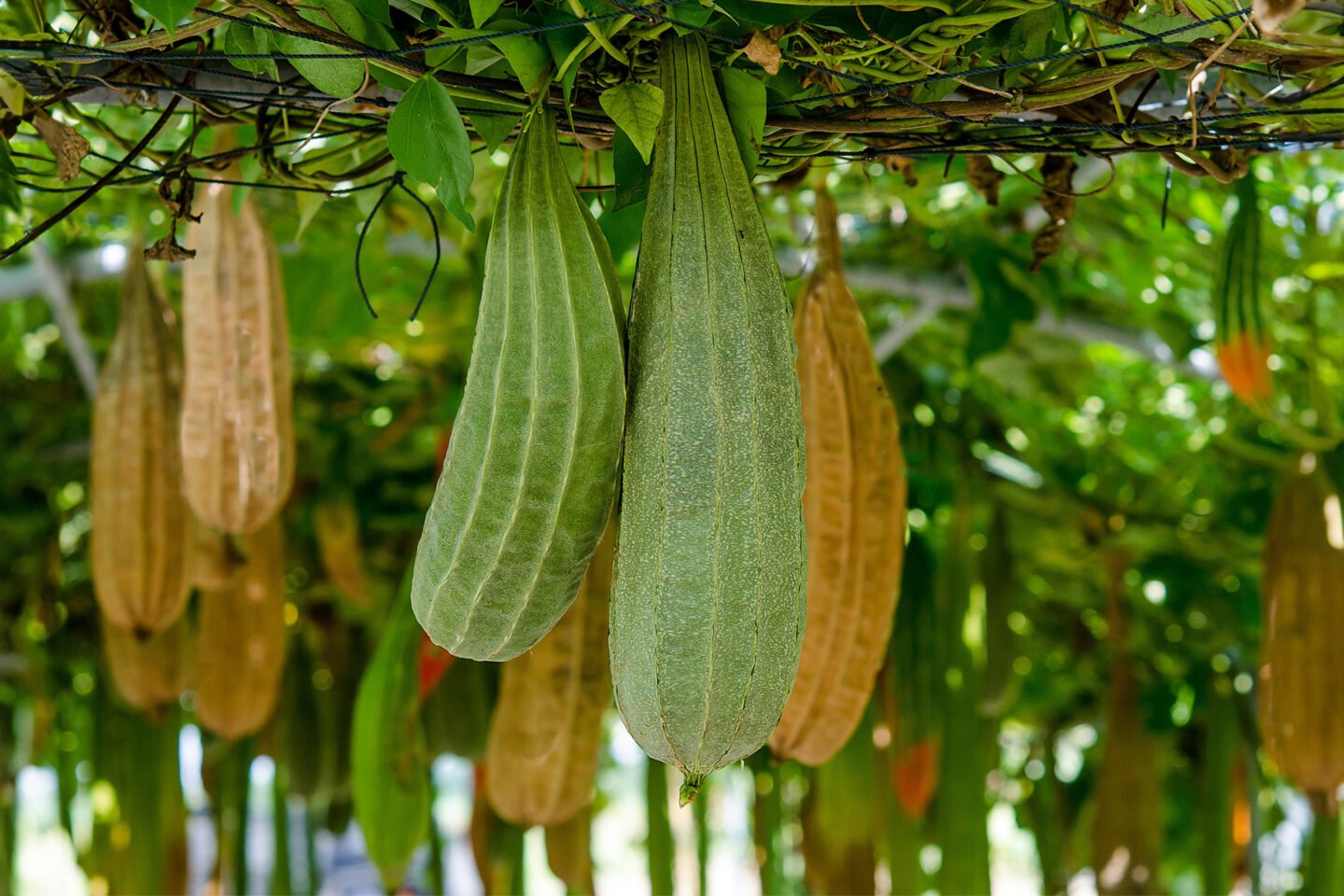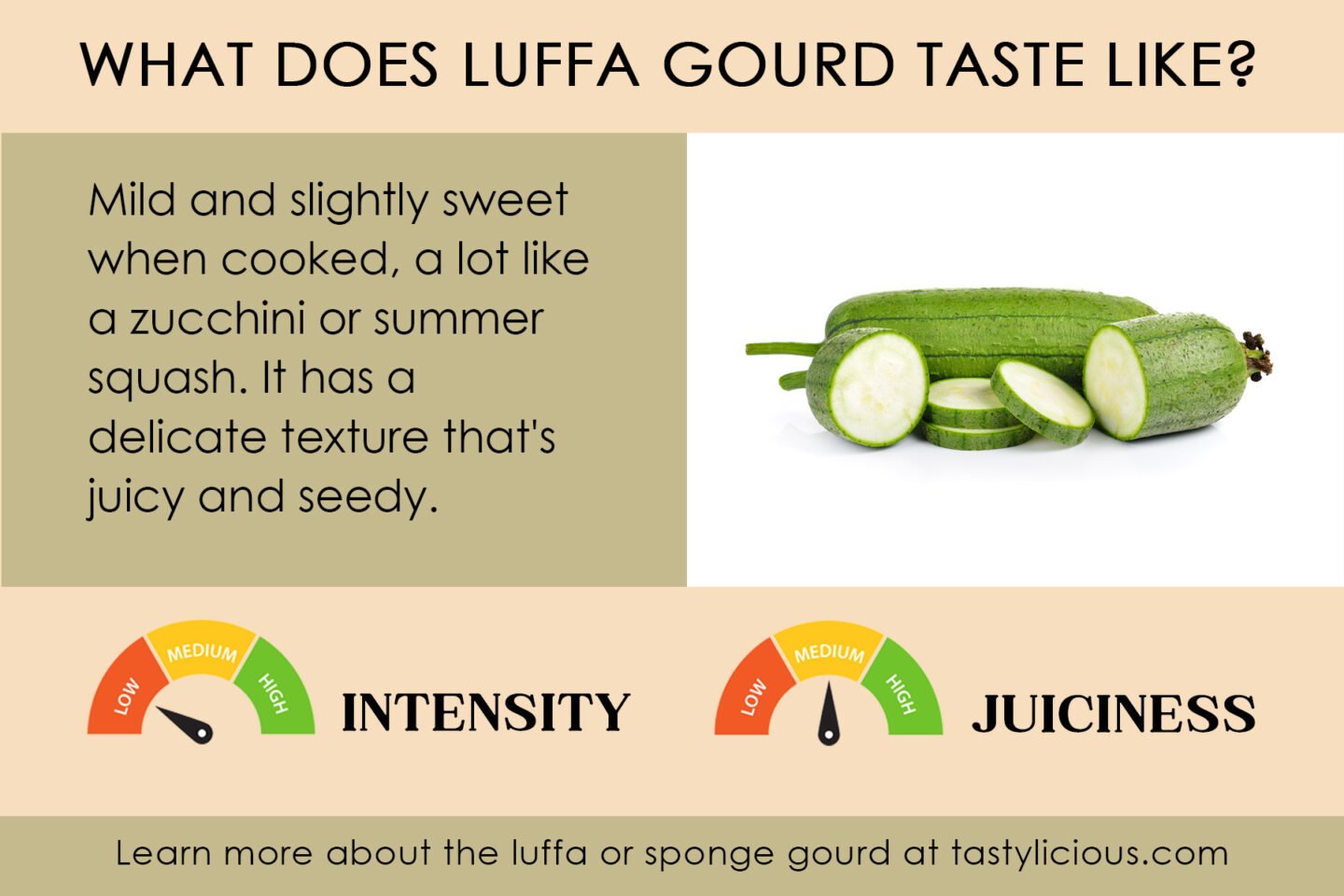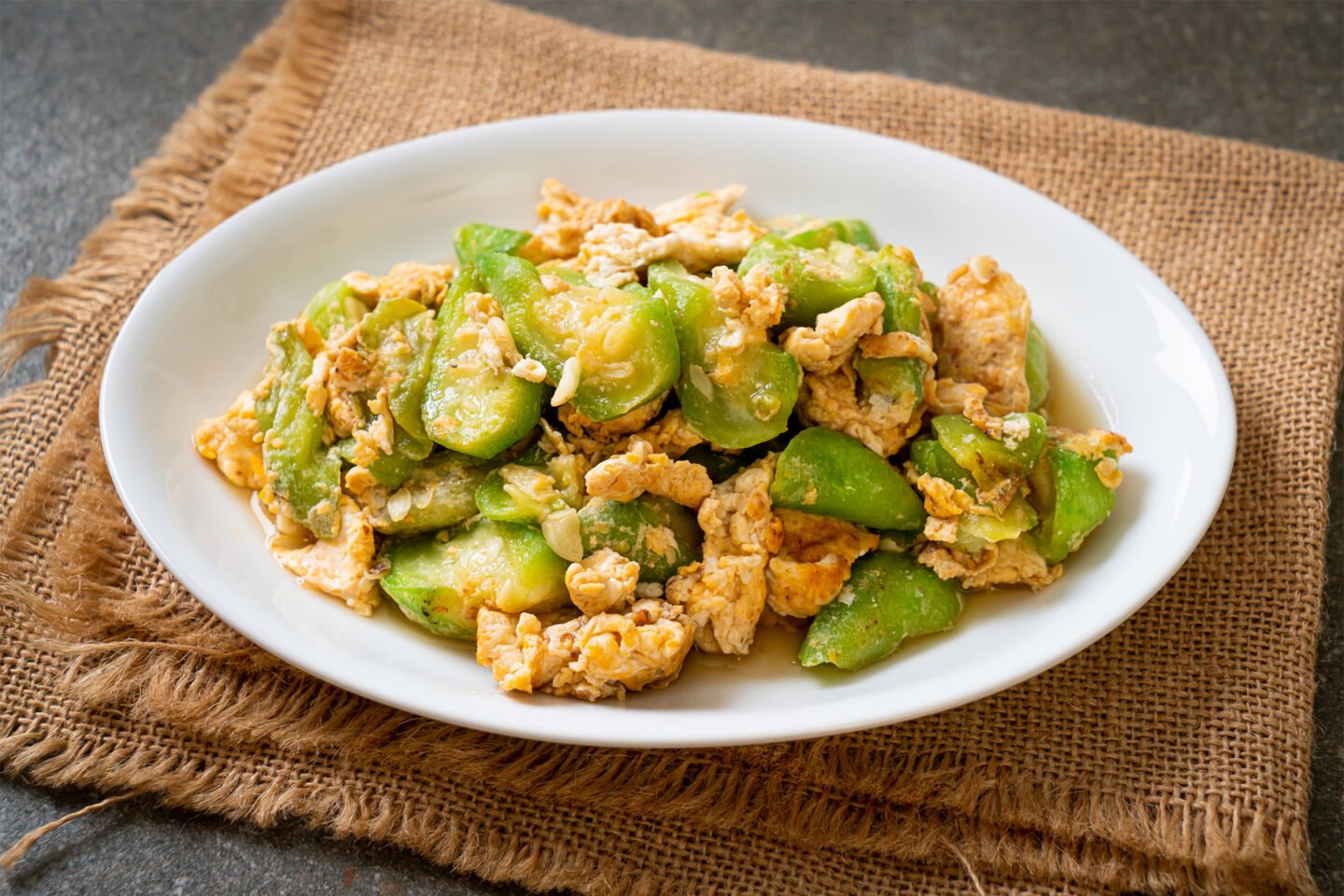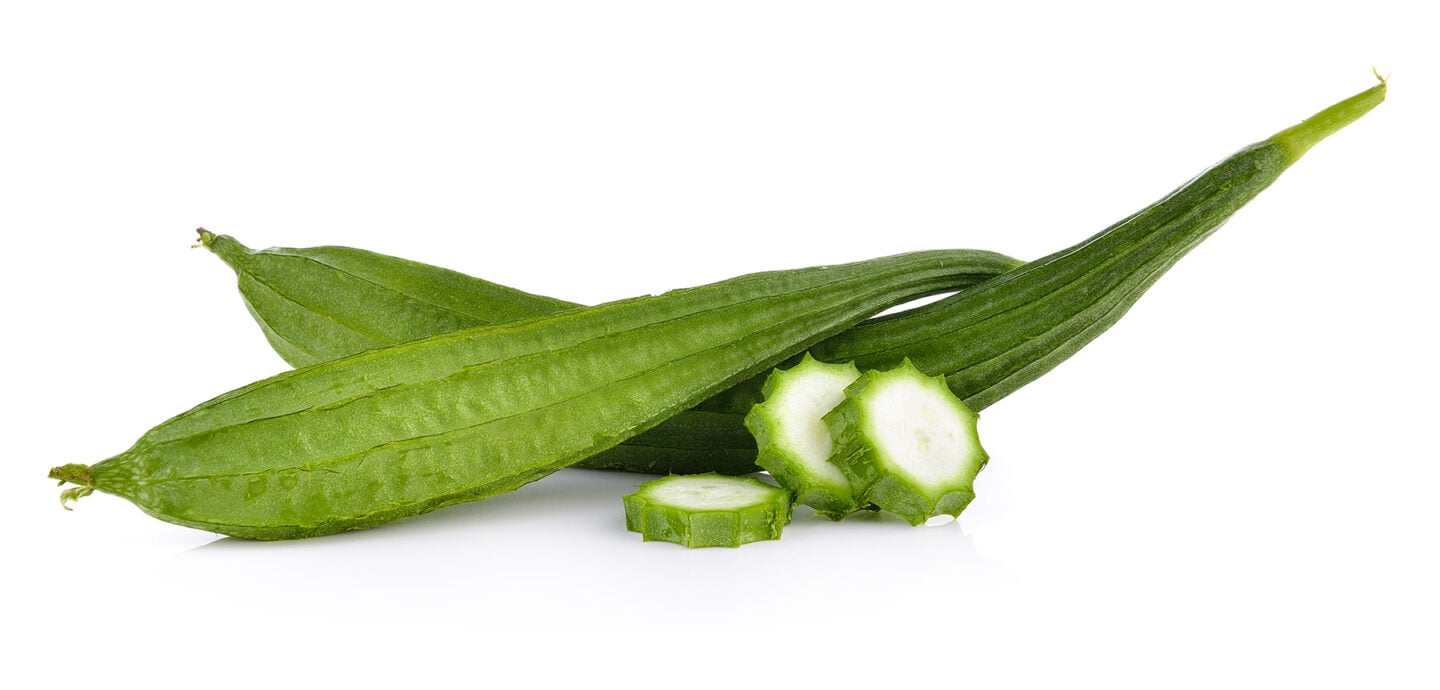The luffa gourd, aka loofah, is a popular vegetable in Vietnamese and Chinese cuisine. It is a close relative of the cucumber and is commonly used in stir-fries, soups, or dipped in batter and deep-fried. If you are new to this ingredient, then you may be wondering, "What does a luffa taste like?" This guide takes a close look at its flavor, texture, and uses in the kitchen.

Table of Contents
What do luffas taste like?
The luffa has white flesh that is mild and slightly sweet. When cooked, it is similar to zucchini or summer squash. The luffa's texture is delicate and full of juice, so cooking it for too long will cause the flesh to break up. You’ll also notice many small, soft seeds that are perfectly edible, a lot like cucumber seeds.
The green skin is bumpy and looks more like a bitter melon, but it is perfectly edible. You will also notice that the peel is tougher than a zucchini’s, which is barely noticeable once cooked.

In Asian cuisine, luffas are revered for their ability to take on the flavors of other foods. Whether you're cooking beef rendang or a salty black bean stirfry, this vegetable will soak up other flavors deliciously.
Flowers will bloom on the luffa plant that are edible, like many other varieties of squash. They're perfect for stuffing or adding color to a salad.
The luffa changes in flavor and texture as it ages. Picked young, they are suitable for eating raw on their own or in salads. If you can find them at a local farmers’ market or the supermarket, then they'll usually be more developed and better suited to cooking. If left to mature for too long, they'll turn bitter and fibrous.
Culinary Uses

Young luffas can be eaten like cucumber and if they're under six inches, they don't need to be peeled. The one we bought must have been over 30 inches, and the uncooked skin was quite bitter. We didn't bother peeling the slices that were cooked; once cooked, the skin was less bitter, but its flesh was mild.
Use the luffa in any recipe that calls for zucchini or squash. It also works well in okra dishes. If you're looking for other uses for the luffa, then here are some popular options:
- Slice into stir-fries, soups, and casseroles.
- Use in pickles, chutneys, and relishes.
- Stuff the flowers or the larger vegetables with meat.
- Slice and add raw to salads or serve with dip.
- Steam or sauté with olive oil and seasoning.
Related reading:
A comparison of zucchini and cucumber.
What can I use as a delicata squash replacement?
Types of Luffa
There are two different varieties of luffa gourd that are commonly grown around the world. Although they have different appearances, they taste the same and can be used interchangeably in recipes.
- Luffa acuntangular: This gourd has a rounder appearance with smooth skin and shallow creases. It has a range of names, including dishrag gourd, smooth luffa, Egyptian luffa, or gourd luffa.
- Luffa aegyptiaca: It has long ridges running lengthways down the skin. It is also called ridged luffa, angled luffa, Chinese okra, or vegetable gourd.

Nutritional Benefits of Luffa
A luffa is a good source of vitamin A and also contains antioxidants and minerals like potassium, manganese, and copper. Eating luffa can help enhance vision, promote weight loss, protect liver function, and relieve constipation.
Fast Facts About the Luffa
- The luffa, or sponge gourd, is a member of the Curcurbitaceae family and has the botanical name L. cylindrica or L. acutangula, depending on the species.
- It is found growing on climbing vines in most climates but thrives in subtropical and tropical weather.
- Although a luffa is botanically considered a fruit, in the kitchen it is used as a vegetable.
- The luffa is a relative of the cucumber, winter melon, pumpkin, and squash.
- A luffa is best stored in the refrigerator and will last four to five days in the vegetable crisper.
- Other common names for the luffa include silk squash, Vietnamese gourd, Si Gua, and ridge gourd.
- The fruit can grow all year, but it flourishes in the warmer summer months.
- Mature luffas can be dried and used to make sponges for exfoliating the skin or cleaning kitchens and bathrooms.
Summing Up
Are you trying to decide whether to get luffas from the store? Maybe you’d like to grow them at home? You’ll find that they’re a great option for people who don’t like strong-flavored food. The luffa is mild and inoffensive, like zucchini, and takes on all the other flavors that it is cooked with.
Keep in mind that a luffa’s taste and texture will vary depending on its age. The young and mid-sized ones are delicious, and removing the peel isn’t essential. Some people are happy to eat mature luffas, but you’ll find they’re not as tender, and the bitterness is much more dominant.

Leave a Reply